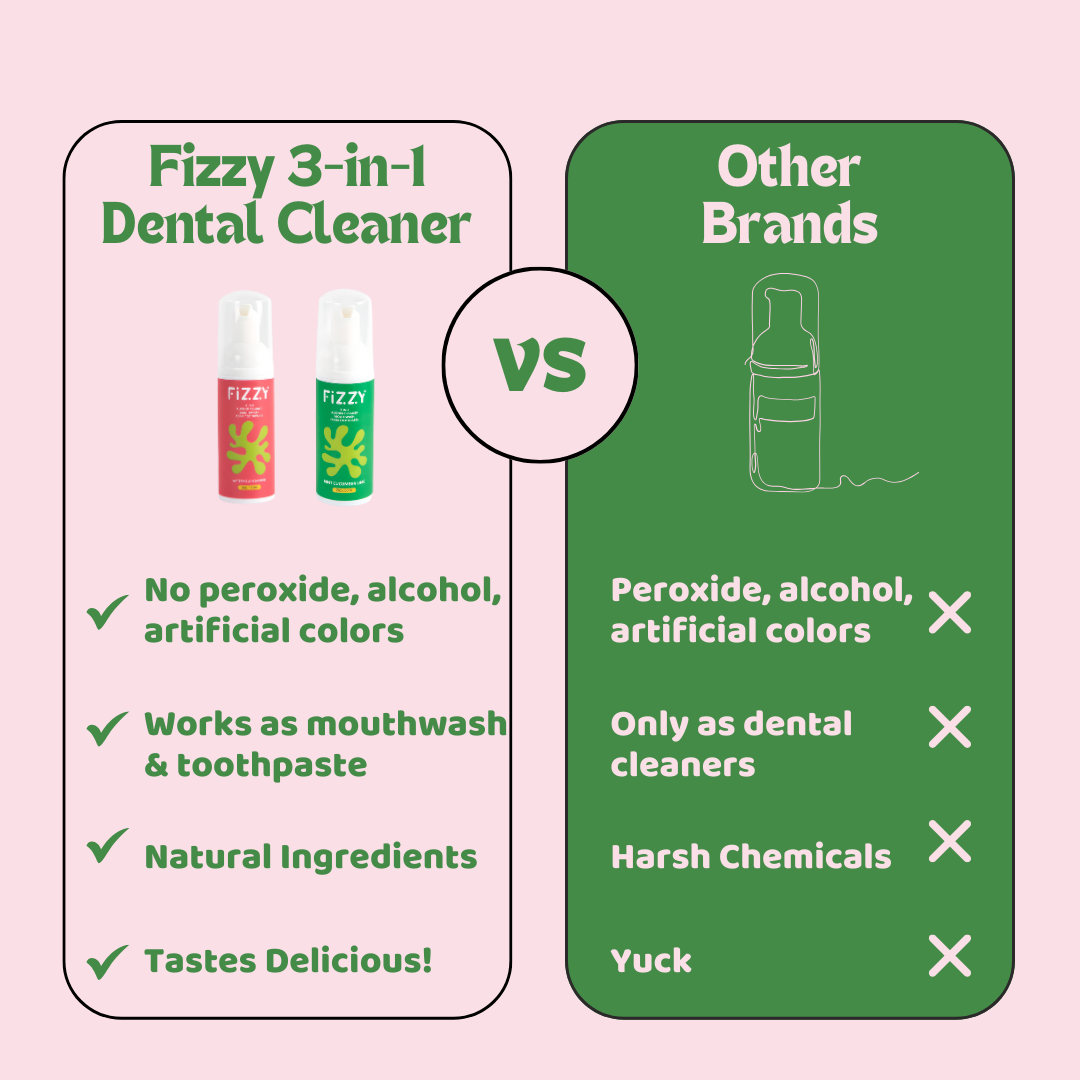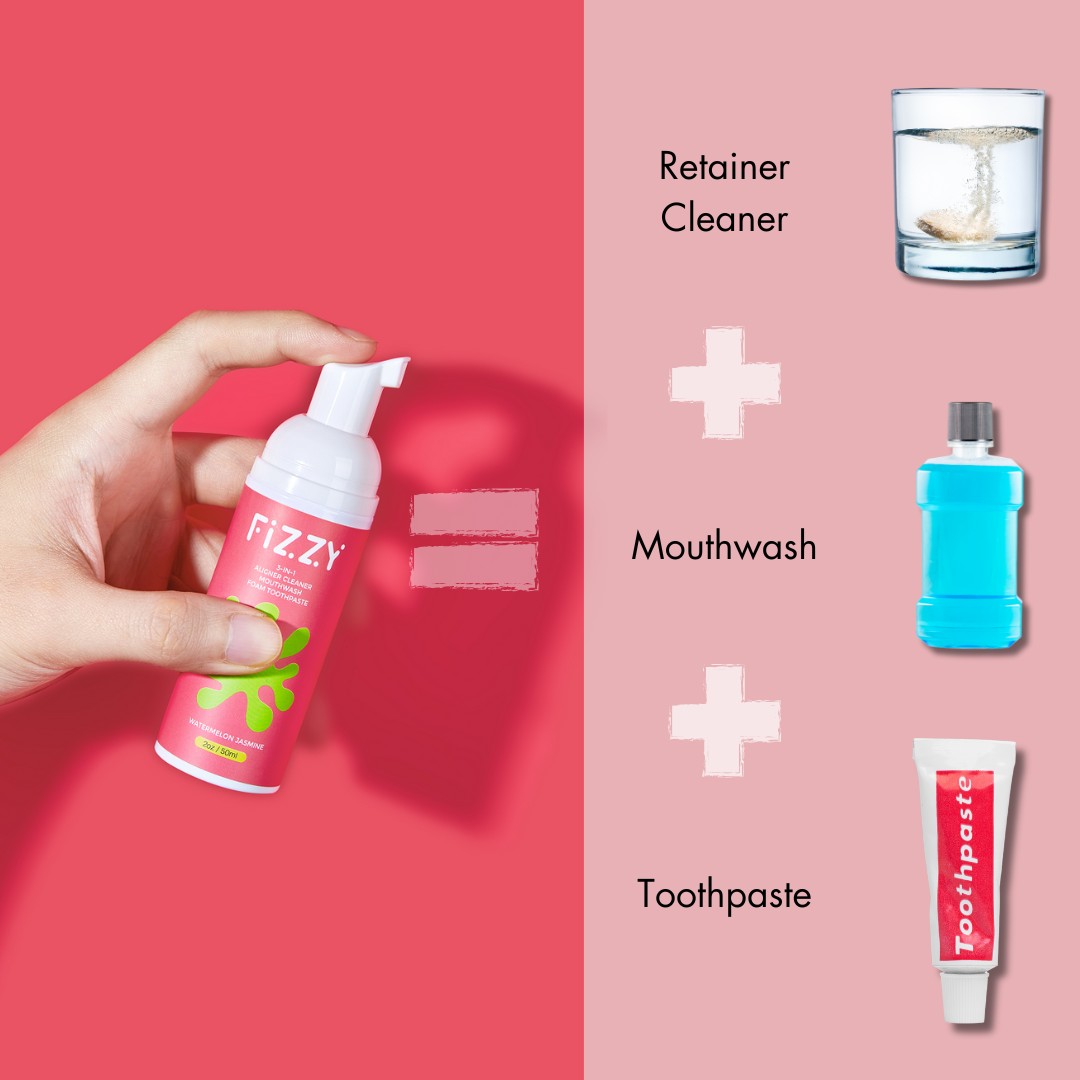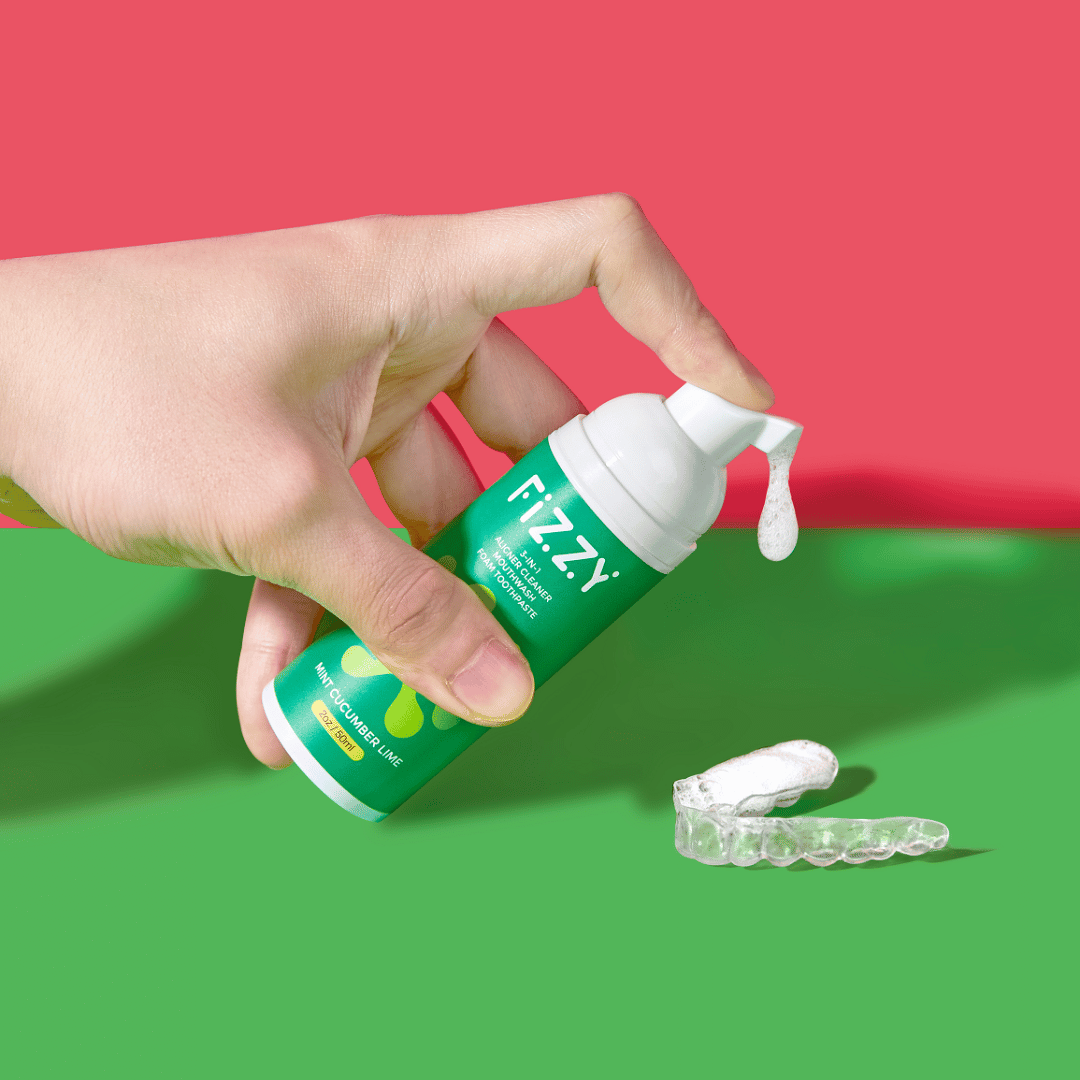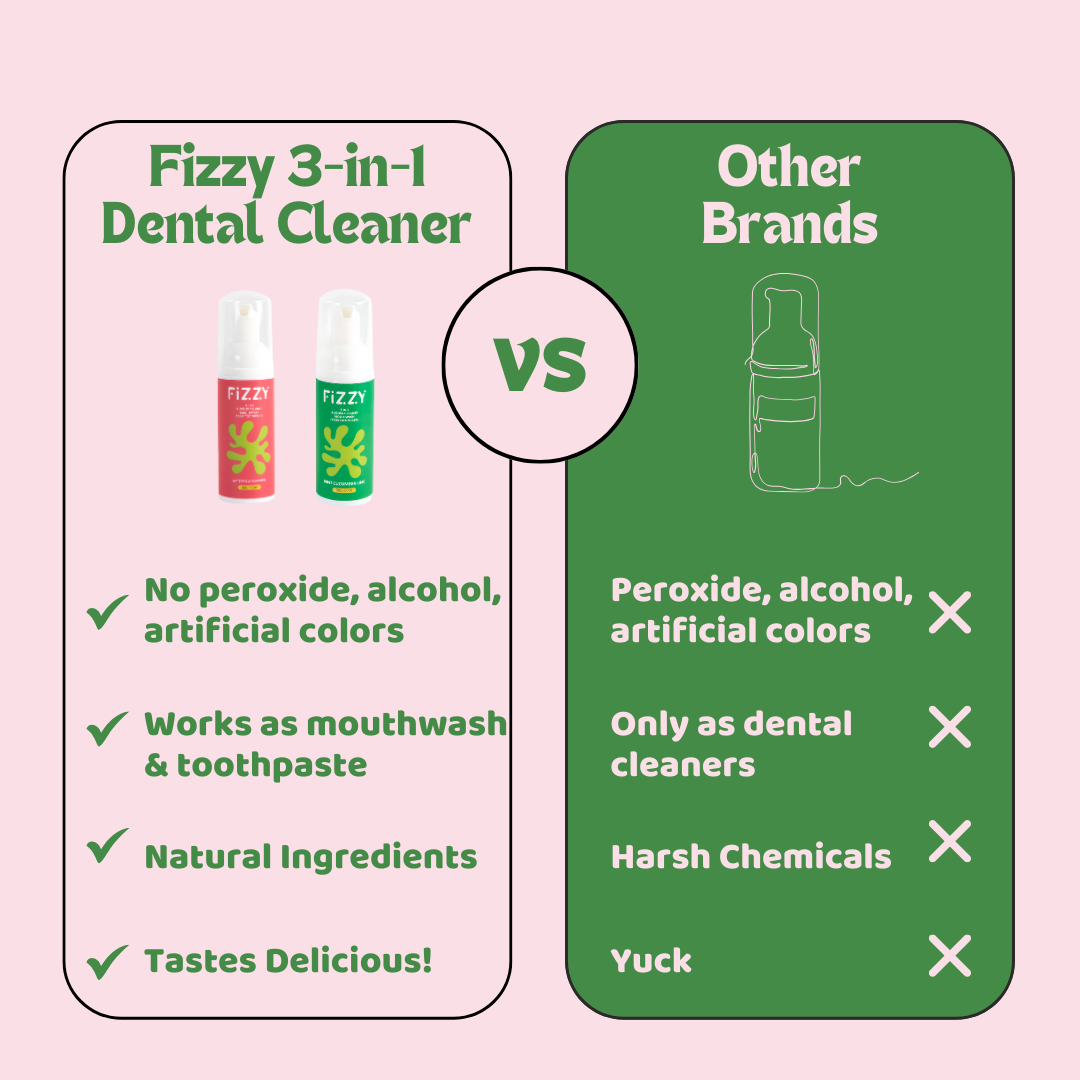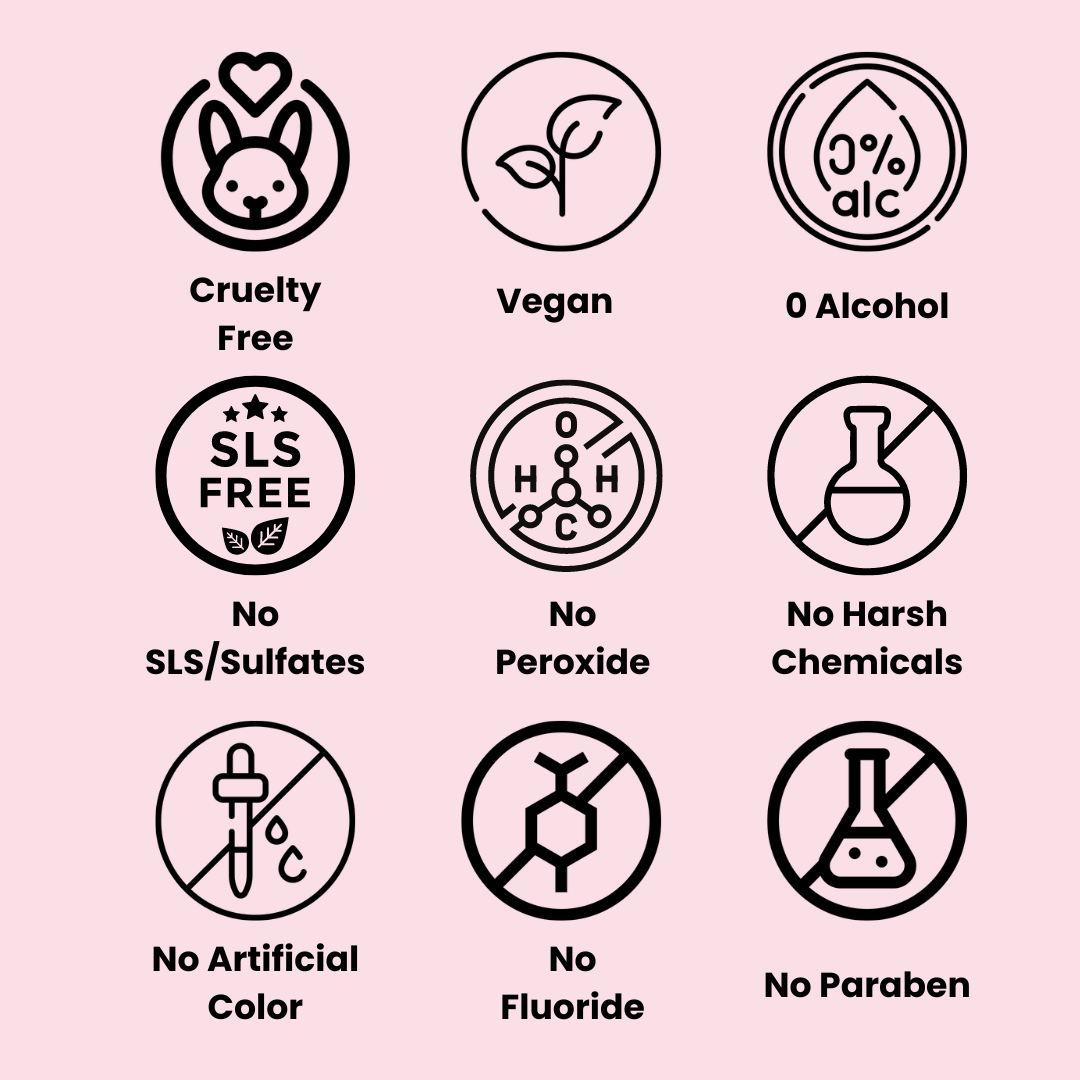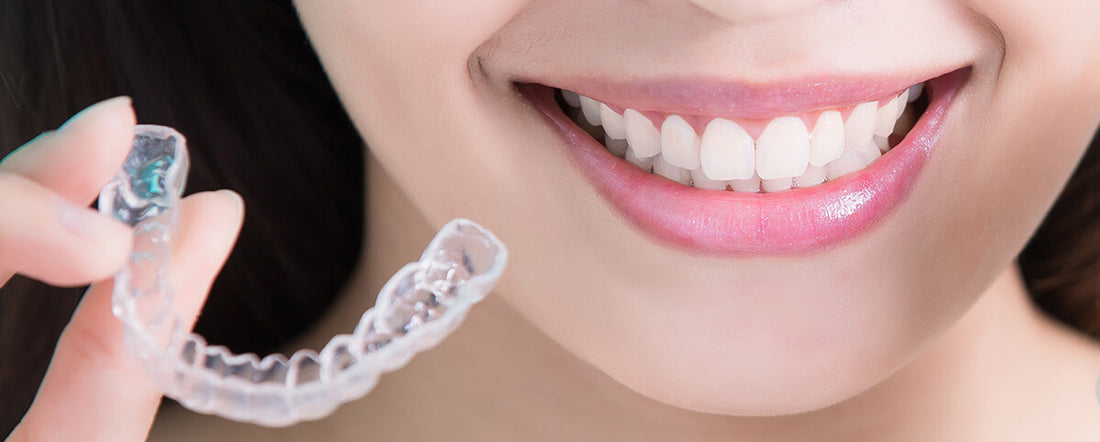
How does Invisalign work? A Guide to Clear Aligners for Straightening Teeth
Inside this Article:
- What is Invisalign
- How Orthodontics Work
- How does Invisalign straighten teeth?
- Stage 1 – Level and Alignment:
- Stage 2 – Bite Correction and Space Closure:
- Stage 3 - Detailing and Finishing
- Retention stage:
- What should you expect for your Invisalign treatment? Step-by-Step
- How long does Invisalign take
- Tips your Invisalign journey
- Fizzy 3-in-1 aligner cleaner
- Summary
If you're contemplating the idea of straightening your teeth, chances are you've heard about the revolutionary aligners called Invisalign. But what exactly is Invisalign and how does invisalign work? And most importantly, what can you expect from this treatment?
What is Invisalign
Invisalign is a brand of clear aligners used in orthodontic treatment to straighten teeth. The aligners are custom-made for each patient and are worn over the teeth, gradually moving them into the desired position. Invisalign aligners are made from a clear, thermoplastic material that is virtually invisible when worn, making them a popular alternative to traditional metal braces. Treatment with Invisalign typically involves a series of aligners that are changed every one to two weeks as the teeth move into place. Invisalign can be used to treat a variety of orthodontic issues, including crooked or crowded teeth, gaps between teeth, and bite problems.
How Orthodontics Work
Orthodontic treatment, whether with braces or clear aligners like Invisalign, works by applying gentle pressure to the teeth to move them into their proper position over time. This is typically done using braces or clear aligners, which are custom-made to fit the patient's teeth.
During orthodontic treatment, teeth move through a process called bone remodeling. Bone remodeling is a biological process in which bone tissue is broken down and rebuilt in response to the pressure and tension created by orthodontic appliances such as braces or aligners.
As pressure is applied to the teeth, the bone tissue on one side of the tooth is broken down, while new bone tissue is formed on the other side. This allows the tooth to move gradually in the direction of the applied force.
Over time, the bone tissue continues to remodel, allowing the tooth to move further into the desired position. This process is slow and controlled to prevent damage to the teeth and surrounding tissues.
During orthodontic treatment, the teeth are also held in place by ligaments and fibers that attach them to the bone. As the teeth move, these ligaments and fibers are stretched and repositioned to accommodate the new tooth position.
In addition to bone remodeling and ligament stretching, orthodontic treatment may also involve changes to the shape and position of the surrounding gums and other soft tissues in the mouth. This helps to ensure that the teeth are properly aligned and that the bite is corrected.
How does Invisalign straighten teeth?
The movement of bones and teeth during Invisalign treatment can be divided into 4 phases:
Stage 1 – Level and Alignment:
During the initial stage of Invisalign treatment, the aligners are designed to create a gentle force on the teeth, which begins the process of moving them into the desired position. At this stage, the forces on the teeth are relatively low, and the movement is generally limited to the crowns of the teeth. As treatment progresses, the forces become stronger, and the movement extends deeper into the roots of the teeth and the surrounding bone.
The goal of the initial stage is to prepare the teeth for more significant movement during the active stage. The initial stage involves minor movements, such as tipping and rotating the teeth, to make space for more significant movements later on. Additionally, the initial stage helps to improve the alignment of the teeth, making it easier for them to move during the active stage. The initial stage of braces and Invisalign is dedicated to aligning and leveling the teeth. Aligning means derogating and straightening your teeth to make a nice arch form or curve for your teeth (think about looking straight down at your teeth from above them). Leveling means fixing vertical discrepancies by ensuring teeth are the same height within the arches.
Research has shown that during the initial stage of Invisalign treatment, there is a significant amount of tooth movement, particularly during the first few days of wearing each new aligner. According to a study published in the Journal of Orthodontics, during the first three days of wearing a new aligner, there is an average of 0.3 mm of tooth movement per day. Another study published in the American Journal of Orthodontics and Dentofacial Orthopedics found that during the first week of wearing a new aligner, there is an average of 0.5 mm of tooth movement.
Stage 2 – Bite Correction and Space Closure:
During the active stage of Invisalign treatment, the teeth are gradually moved to their desired positions through the use of custom-made aligners. This stage can last several months to over a year, depending on the severity of the orthodontic issue. During this stage, We need to get the relationship between the molars correct, close any spaces, and ensure the upper and lower teeth come together properly. When the teeth move, the bite will also change.
Bite correction involves aligning the upper and lower jaws so that they fit together properly, resulting in a proper bite. A proper bite helps prevent dental problems like tooth wear, gum disease, and jaw pain. It can also improve the appearance of the smile and facial structure.
Space closure involves moving teeth closer together to fill gaps or spaces between teeth. This is commonly done for patients with gaps between their front teeth or those who have lost a tooth and want to close the gap. Invisalign can effectively close gaps by gradually moving teeth into the desired position.
Stage 3 - Detailing and Finishing
Stage 3 of Invisalign treatment is called Detailing and Finishing. This stage is focused on refining the final position of the teeth and achieving a perfect bite.
During this stage, the aligners are designed to make very small movements to ensure that the teeth are in their optimal positions. The orthodontist will closely monitor the progress of treatment and make any necessary adjustments to the aligners.
In some cases, additional attachments or buttons may be added to the teeth to help with certain movements or to facilitate better control of the teeth. These attachments are small, tooth-colored bumps that are bonded to the teeth and help the aligners apply the necessary force to move the teeth.
Once the teeth are in their final positions, the orthodontist will make an assessment to determine if any additional refinements are needed. If so, a new set of aligners will be created to make these final adjustments.
The Detailing and Finishing stage is critical for ensuring that the teeth are aligned correctly and the bite is properly aligned. It requires careful planning and attention to detail by both the orthodontist and the patient to achieve optimal results.
Retention stage:
Once the teeth have been repositioned, a period of retention is necessary to allow the bone to fully remodel around the new tooth positions. The goal of the retention stage in Invisalign treatment is to maintain the corrected alignment of the teeth and prevent them from shifting back to their original position. During this stage, patients wear a retainer, which is typically a custom-made clear plastic device that fits over the teeth, to keep them in place. The length of the retention stage can vary depending on the individual case, but it typically lasts several months to a few years.
The retention stage is important because teeth have a tendency to shift back to their original position, especially in the first few months after treatment. Wearing a retainer helps to prevent this from happening and ensures that the teeth stay in their new, straighter position. It's important for patients to follow their orthodontist's instructions for wearing the retainer and attending follow-up appointments to ensure the best possible outcome from their Invisalign treatment.
What should you expect for your Invisalign treatment? Step-by-Step
- Initial consultation: The orthodontist will evaluate the patient's teeth and jaw to determine if Invisalign is a suitable treatment option. If so, the orthodontist will take digital impressions, X-rays, and photographs of the teeth and use them to create a 3D computer model of the patient's mouth.
- Treatment planning: Using the 3D computer model, the orthodontist will create a customized treatment plan that outlines the specific tooth movements needed to achieve the desired results. The plan includes a series of aligners that are designed to move the teeth gradually into their desired position.
- Aligner fabrication: Once the treatment plan is finalized, a series of clear plastic aligners are custom-made for the patient using computer-aided design and manufacturing (CAD/CAM) technology. Each aligner is slightly different from the one before it, designed to move the teeth a little further toward their final position.
- Aligner wear: The patient wears each set of aligners for approximately two weeks, 22 hours a day, before switching to the next set in the series. The aligners are removable, making it easy to eat, brush, and floss during treatment.
- Progress monitoring: The orthodontist will schedule regular appointments to monitor the patient's progress and make any necessary adjustments to the treatment plan. As the teeth move into the desired position, new sets of aligners are provided to continue the treatment process.
- Treatment completion: Once the final set of aligners is worn, the teeth should be in their desired position. The orthodontist may recommend a retainer to be worn to maintain the results achieved with the Invisalign treatment.
How long does Invisalign take
The time required for Invisalign treatment depends on various factors, including the complexity of the case, patient compliance, frequency of aligner changes, oral hygiene, and the experience of the orthodontist. More severe cases may require up to 24 months or more for treatment, while mild to moderate cases may take around 6-12 months. Compliance with treatment, including wearing the aligners as directed and attending regular appointments, is crucial. Good oral hygiene is also essential to prevent dental issues that can delay treatment. An experienced orthodontist can develop a more precise treatment plan and address potential issues promptly, leading to faster treatment times. Age alone is not the only factor affecting expected duration, but younger patients may experience faster treatment times due to their more pliable jawbones.
Tips your Invisalign journey
If you are planning to undergo Invisalign treatment, here are some tips to help you on your journey:
- Wear your aligners for the recommended amount of time: Invisalign aligners should be worn for at least 22 hours a day to ensure the best results. Try to only remove them when eating, brushing, or flossing.
- Keep your aligners clean: Brush your aligners gently with a soft-bristled toothbrush and rinse them with warm water. Avoid using hot water, which can warp the plastic. Also, avoid using abrasive toothpaste to clean them as they can scratch the surface. Fizzy’s 3-in-1 aligner cleaner is a perfect solution to clean the aligners, also to rinse your mouth and to give you a fresh smile.
- Change your aligners on time: Follow the treatment plan provided by your orthodontist and change your aligners every two weeks or as directed. This helps to ensure that your teeth are moving according to plan.
- Be prepared for some discomfort: You may experience some discomfort or soreness during the first few days of wearing a new set of aligners. This is normal and should subside within a few days.
- Avoid eating or drinking anything except water while wearing your aligners: Invisalign aligners should be removed before eating or drinking anything other than water to prevent staining or damage to the aligners.
- Don't forget to brush and floss: Keeping your teeth and gums clean and healthy is important during Invisalign treatment. Brush your teeth after meals and floss daily to remove any food particles or plaque that can accumulate around the aligners.
- Keep up with your orthodontic appointments: Regular check-ups with your orthodontist are essential to monitor your progress and ensure that your treatment is progressing as planned.
Fizzy 3-in-1 aligner cleaner
Introducing Fizzy 3-in-1 aligner cleaner, mouthwash and toothpaste, the ultimate oral care solution for anyone who wears aligners! This innovative product combines the cleaning power of an aligner cleaner, the freshness of a mouthwash, and the effectiveness of a toothpaste, all in one convenient tube. Fizzy 3-in-1 is specially formulated to remove plaque and bacteria from aligners, freshen breath, and promote healthy teeth and gums. Its gentle yet effective formula is safe for daily use and will leave your aligners clean, your mouth feeling fresh, and your teeth sparkling clean. Try Fizzy 3-in-1 today and experience the ultimate oral care solution for aligner wearers!
Summary
Invisalign is a revolutionary orthodontic treatment that uses custom-made clear aligners to straighten teeth. The process involves bone remodeling, ligament stretching, and changes to the shape and position of surrounding gums and soft tissues in the mouth. Invisalign treatment is divided into three stages, and during each stage, the aligners are designed to make specific movements to achieve the desired results. Overall, Invisalign treatment can help to improve the appearance of the smile, enhance dental health, and boost self-confidence. With proper care and regular visits to your orthodontist, you can achieve a beautiful, healthy smile that lasts a lifetime.
Sources:







